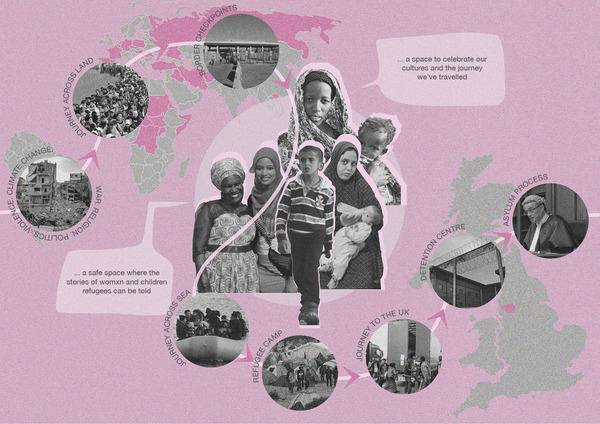This project has taken an intersectional feminist approach to archiving the stories of womxn and children refugees.
This user centric design aims to inform and educate the general public through the design of a sensory exhibition. It aims to give refugees / asylum seekers a safe space to receive support, celebrate their culture and remember those lost through the design of a memorial garden. Charities also have a space to raise money and awareness of the atrocities of the refugee crisis.
The design reverses the systems of the patriarchy by creating safe spaces within the archive solely for womxn and children. These spaces, known as 'Harem Spaces', incorporate a curved perforated Islamic lattice facade to create a calming interior environment. I have challenged the restrictions on feminism with religion by designing a female prayer room within the heart of the archive.
The form and circulation of the building represent the journey of a refugee. The building has an arranged circulation whereby the experience gets more positive as you move up through the floors, representing that refugees / asylum seekers are travelling to a better future. The main stairwells have been designed to be challenging to walk up. One has to move side-to-side and duck to walk up the stairs. 'Gash-lighting' guides the users up the stairs representing that the journey to a better future is challenging. The form of the building is divided into three by two lakes. 'Reflective bridges' take visitors between the three buildings. The angle of the lakes enables views from the bridges to the Pankhurst Centre (the on-site heritage building) and the memorial garden. Due to the nature of the exhibition, the 'reflective bridges' act as breaks within the archive.
I am interested in projects which respond to the climate agenda, challenge the patriarchy and enable social mobility.


